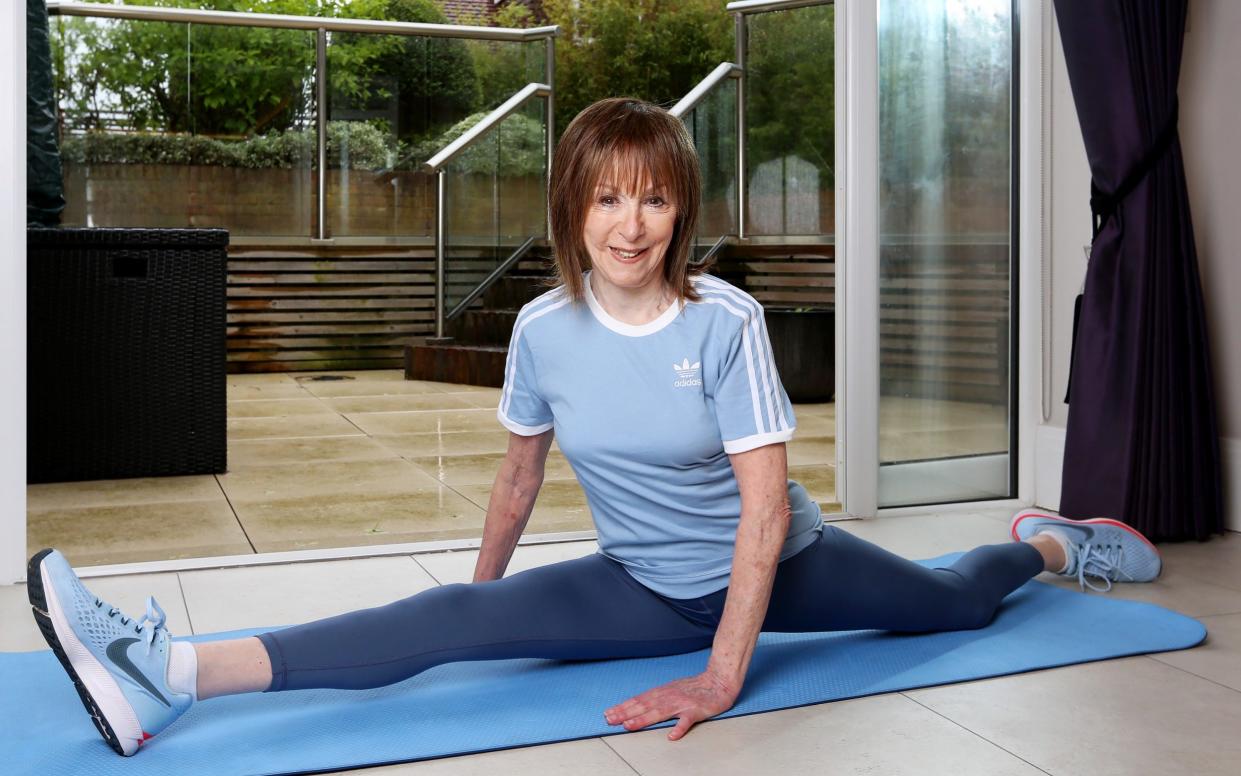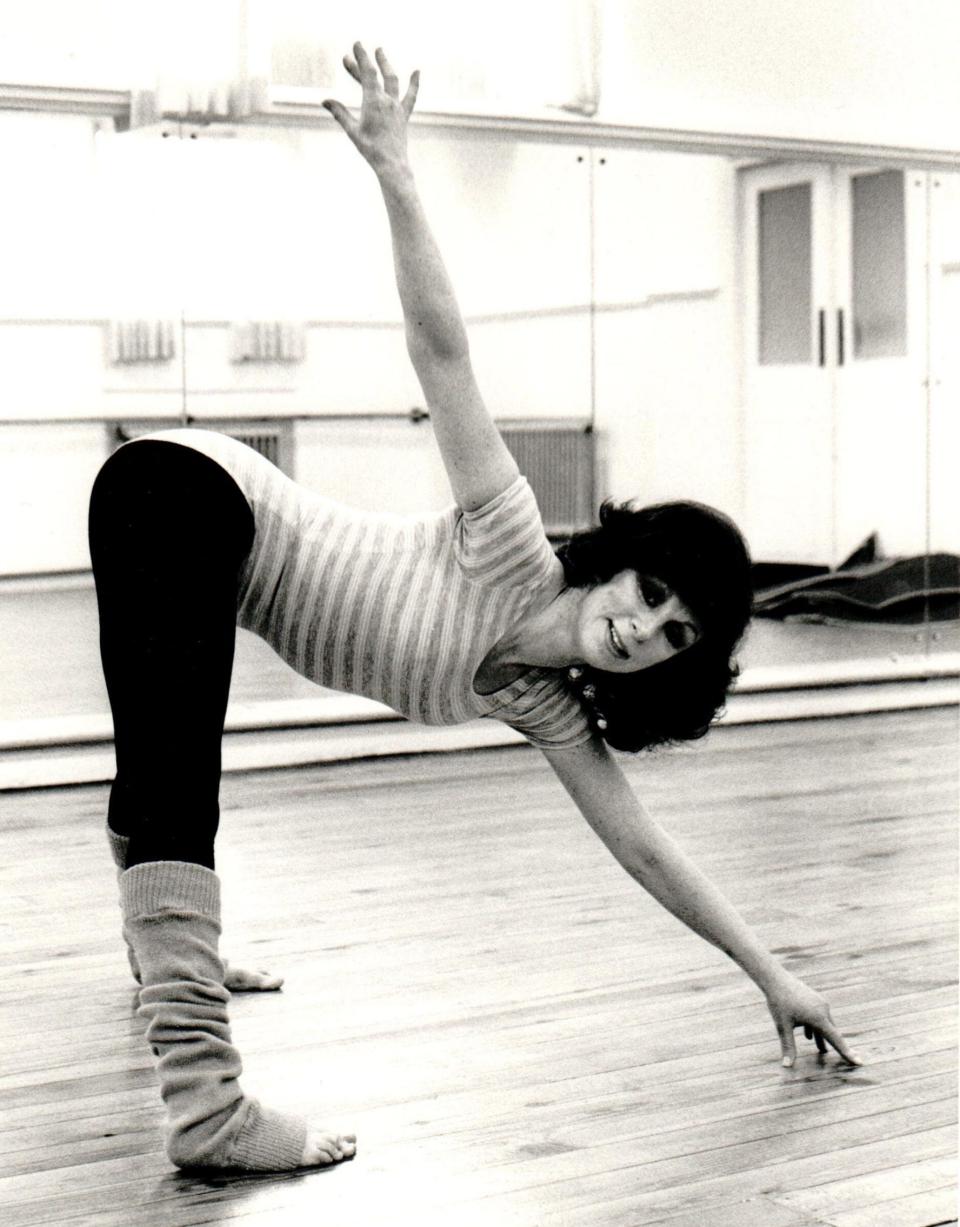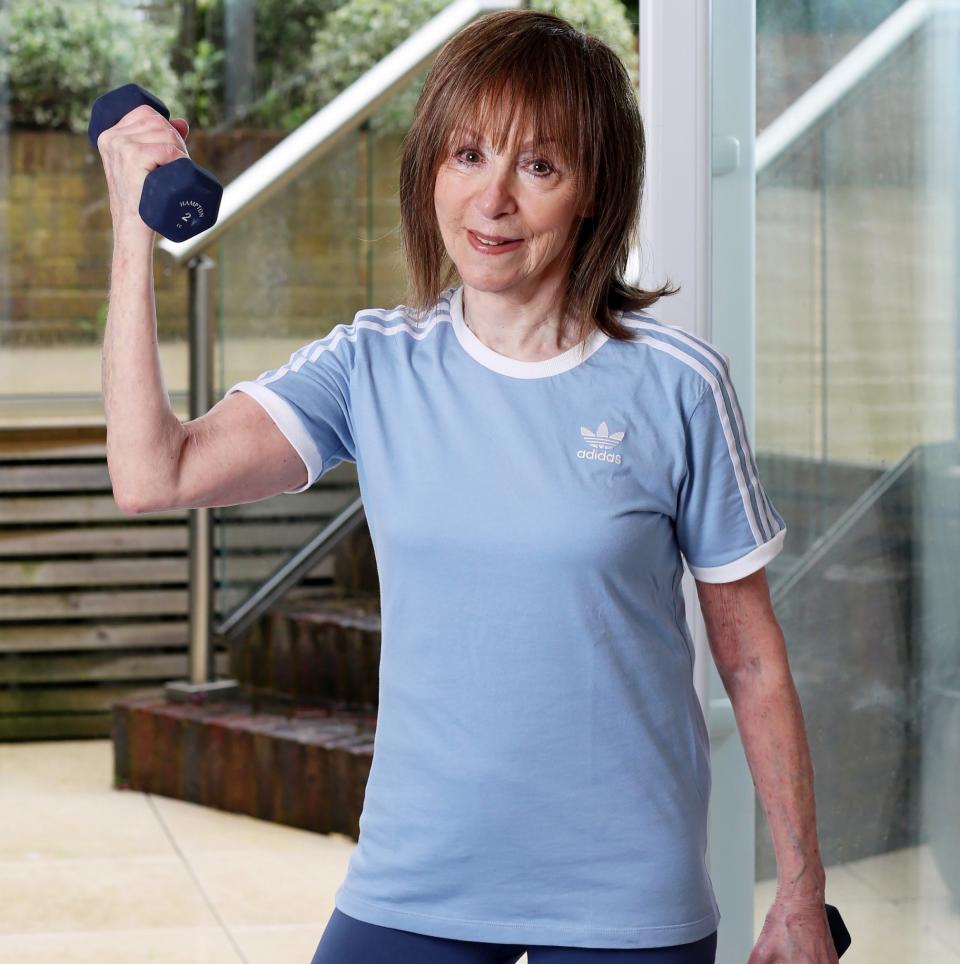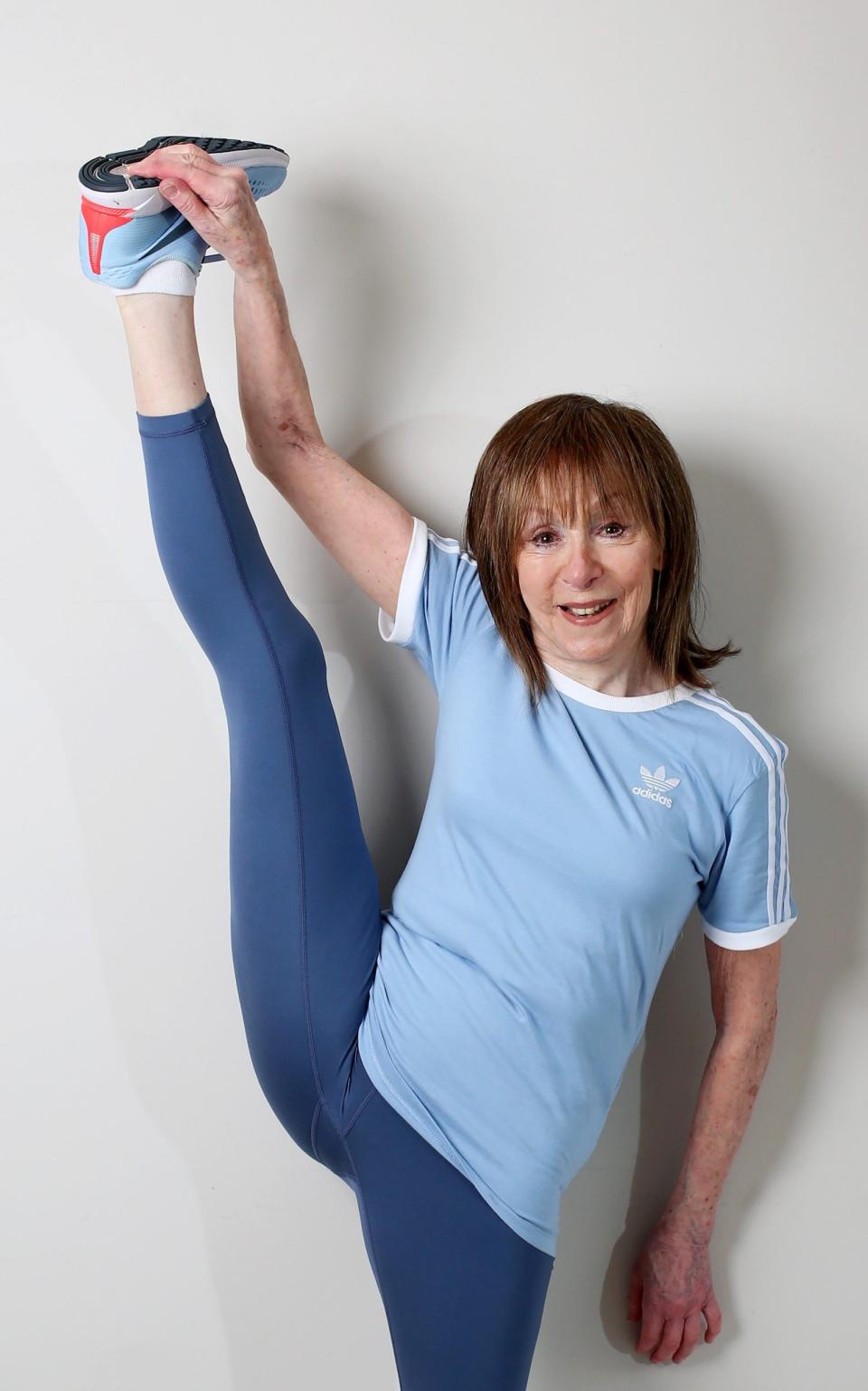I’m 84 and can still do the splits – here’s how to stay active as you age

Growing up I hated exercise, and would deliberately lose my navy knickers any time we had to do sports at school. But at 25, after the birth of my third child, I’d gotten so fat that my mother said: “you should really do some exercise.”
This was the early 1960s, so that meant going along to her Keep Fit class in a church hall, which I loathed. Yet when I later met a woman at a party, she took me to a jazz class in Covent Garden – and suddenly, things changed. In those days, the classes were being taught by the likes of Arlene Phillips; one morning, I even spotted Twiggy – who was gawky and awkward as a dancer – trying her best to follow the routine. For the first time in my life, it felt like fitness could be fun. I enjoyed those classes so much that I trained as an instructor, ran my own studio for a period and, at 84, still teach four classes a week. I can also easily do the splits, and 20 press-ups, which isn’t half bad for almost 85.

I’ve not gone more than two days without exercise for 50 years. (Unfortunately I never saw the woman who had introduced me to dance again; I wish I could have thanked her for changing my life.) As well as personal training, I do four classes each week for myself: a strenuous aerobic class for cardio, a dance class and two Pilates sessions. I train across disciplines to maintain what I call the three ‘S’s: to be supple, strong and have stamina. After your 30s, you start losing muscle, so even lifting light weights can help. You also need to be supple to avoid injury, and Pilates is really good for that.
Being flexible helps balance, too. Joints get stiffer as you age, so simple exercises like standing on one leg are crucial, so you don’t fall over when you’re stepping into your leggings. Bones get weaker over time, needing cardio and weight-bearing exercises such as squats and press-ups to strengthen and prevent osteoporosis.
When I got to 80, I thought: this is properly old now, and even wrote a book on the subject, Getting Old: Deal With It. But in fact, I’ve begun to notice a real divide between my “old” friends. Either they’re still whizzing around like me, exercising multiple times a week and running after their grandchildren. Or, they’re walking on sticks, or can’t go up the stairs or bend down to do up their shoes. It’s made me realise that we have more control over ageing than we realise. You don’t have to suddenly become a bodybuilder once you get your bus pass – this isn’t a competitive sport. My advice to my clients is just to do something small (even if it’s lifting 1kg weights) and maintain it at a level that suits you; don’t strive to do more and more.

I’ve always been petite (though I put on three stone with my five pregnancies), but I keep to a simple food rule: eat like a slim person. I know how hard it is, as I was a binger in my 30s and 40s, dieting constantly to lose the baby weight, then entering a vicious binge cycle again. Eating just one biscuit would promote the thought, “Oh well, I’ve ruined the diet now, so I might as well go on eating everything fattening today and start my diet again tomorrow”.
I finally kicked bingeing after reading a book called Sugar Blues by William Dufty in the early 1980s, which highlighted to me how awful the effects of the sugar I was eating were on my mental health. It was a eureka moment, and led me to become a diet counsellor – I could truly understand what my clients were going through. I haven’t binged since.
As you get older, it’s easier to stay in control of what you eat, as your appetite shrinks. I try to choose food for health – and I’d say I succeed around 90 per cent of the time. That means eating protein at every meal, such as milk with cereal or yoghurt for breakfast, a big salad with cheese or eggs for lunch, and for dinner, chicken or salmon with a variety of vegetables including sweet potato and broccoli. They’re foods that help me to feel full, maintain muscle and preserve bone density. I’ll have a mid-afternoon snack, usually fruit like an apple and grapes and a yoghurt, but I try to stay off refined sugar, as I find it’s addictive and pulls me down mentally. On the odd occasions I do fancy cake or chocolate (my favourite is Dairy Milk), I’ll have it, but that’s perhaps only every couple of weeks.
My eating regime works for me – but trying to follow someone else’s diet is like putting yourself in prison and handing someone else the key. You need a plan that’s doable and fits in with your lifestyle; one where it doesn’t feel like a burden to choose food that you like and will make you feel good. If you’re on a diet that says you must only have cottage cheese and lettuce for lunch, you’re not going to stick to that. I’m not a fan of restricted-calorie diets where followers consume as little as 500 calories on certain days of the week. It’s not much fun being desperately hungry, especially when cooking for your family and trying not to eat it.

If you do cave, here and there, there’s no point beating yourself up about it, because you’ve already done it. The occasional setback will happen, but it’s nothing that a bit of exercise and healthy food planning the next day can’t fix. It’s amazing how good you feel from treating your body well – and I won’t be hanging up my Lycra any time soon.
My five tips for keeping fit at every age
Try Zumba
Age and experience don’t have to be a barrier to trying a new exercise. There are classes everywhere, from church halls to leisure centres, and while people are reluctant to try something new, I have a suggestion: Zumba. Everyone likes dancing (or at least music). The first time you go, you’ll think, “Oh my God, what is this teacher doing?” But then the second time will be slightly easier, because you’ll remember the steps from last week. The third time, some nice lady will say to you, “Do you want to have some coffee after class?” And then suddenly you’ve got a new friend, as well as a new activity to boost your body and mind.
Find your exercise window, and stick to it
I’m a late breakfast person, so waking up, working out and eating afterwards works best for me (and has done for half a century). Establish what time of day feels easiest for you to fit an exercise session in – even if it’s just some gentle Pilates – and make it a non-negotiable part of your routine. The more you enjoy it, the greater the chance of you sticking with it.
Ditch junk food
It might taste nice, but it doesn’t make you feel good, especially if you’re fat and you don’t fit into your clothes. Think like a slim person when that chocolate biscuit is “calling you” at 10pm. Close the tin and have a hot drink instead.
Think about what you can do – not what you can’t
I’d like to try water-skiing, but I appreciate that, at 84, the risk of hurting myself is a little high. However, thinking about the many things I can still do – running up and down the stairs, hopping on the Tube – are hugely empowering, both physically and psychologically.
Make a plan – one day at a time
Planning ahead will make healthy choices far easier. For example, if you can’t fit in an exercise session, can you grab a 20-minute walk round the block? Do you need to take something out of the freezer that morning for your evening meal? Making a plan at the outset of the day will prevent that “Oh it’s 7pm, let’s get a takeaway” situation. Think of yourself as a fit, healthy person – and that’s what you’ll always be.
As told to Charlotte Lytton

